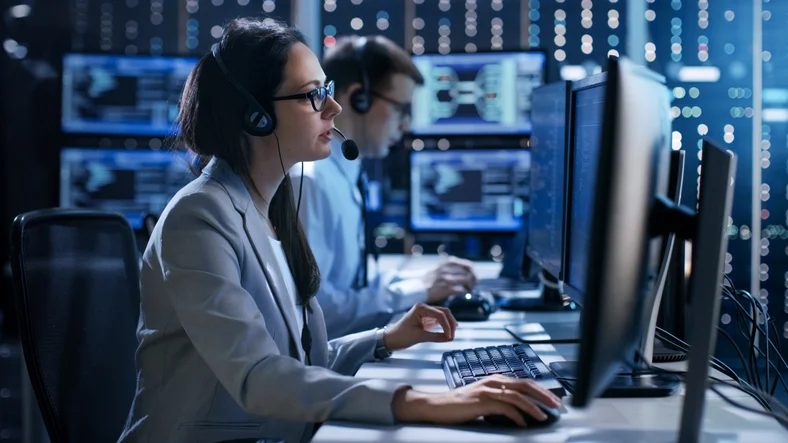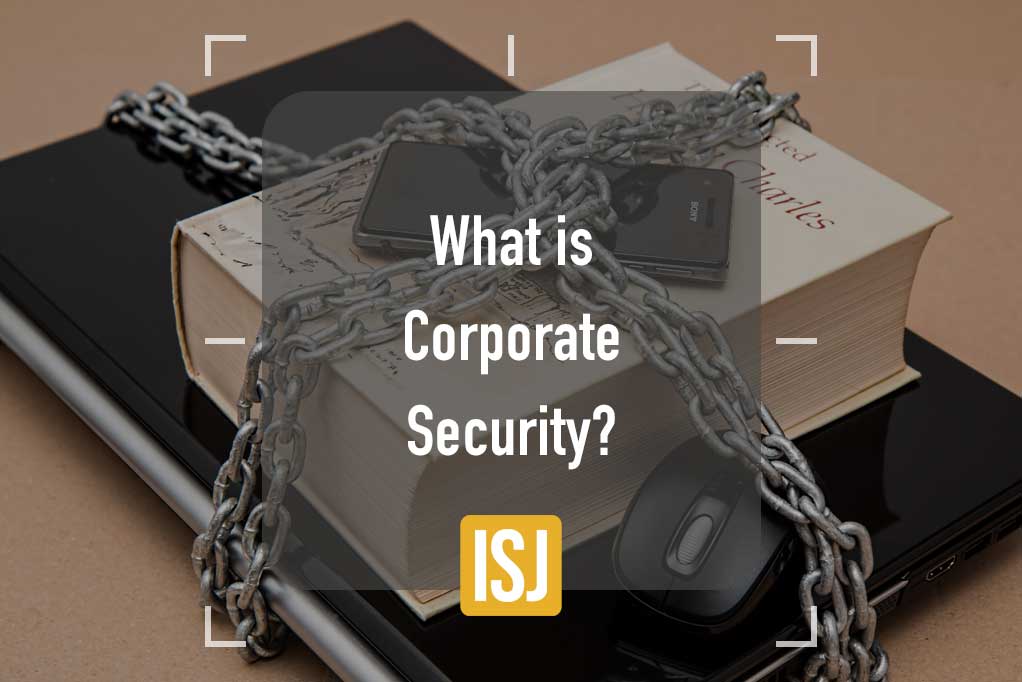From Cybersecurity to Physical Actions: Enhancing Corporate Protection in a Changing Globe
In today's swiftly progressing digital landscape, the relevance of company safety and security can not be overstated. As cyber dangers become prevalent and significantly sophisticated, companies need to exceed typical cybersecurity steps to guard their procedures and assets - corporate security. This is where the combination of physical safety and security actions ends up being crucial. By integrating the strengths of both cybersecurity and physical safety, firms can create a detailed protection technique that resolves the diverse range of dangers they face. In this discussion, we will certainly discover the transforming risk landscape, the requirement to incorporate cybersecurity and physical protection, the implementation of multi-factor verification actions, the importance of employee recognition and training, and the adaptation of safety and security steps for remote labor forces. By examining these crucial locations, we will certainly obtain important insights into exactly how organizations can enhance their company security in an ever-changing globe.
Recognizing the Transforming Danger Landscape
The progressing nature of the modern globe requires a detailed understanding of the altering hazard landscape for efficient corporate security. In today's digital and interconnected age, hazards to corporate security have become a lot more complex and innovative. As innovation advances and organizations end up being increasingly dependent on digital facilities, the possibility for cyberattacks, information breaches, and other protection breaches has actually considerably raised. It is important for companies to remain notified and adjust their security gauges to deal with these evolving hazards.
One trick facet of recognizing the changing threat landscape is recognizing the different kinds of dangers that organizations deal with. In addition, physical risks such as theft, vandalism, and corporate espionage continue to be widespread problems for businesses.
Monitoring and assessing the risk landscape is vital in order to determine possible dangers and vulnerabilities. This entails staying upgraded on the most up to date cybersecurity patterns, evaluating danger intelligence reports, and performing routine danger evaluations. By understanding the transforming danger landscape, organizations can proactively execute appropriate security actions to alleviate risks and protect their properties, credibility, and stakeholders.
Integrating Cybersecurity and Physical Safety
Integrating cybersecurity and physical security is critical for detailed corporate protection in today's interconnected and electronic landscape. As companies increasingly depend on modern technology and interconnected systems, the limits in between physical and cyber risks are becoming obscured. To effectively secure against these threats, an alternative approach that integrates both cybersecurity and physical protection steps is important.
Cybersecurity concentrates on safeguarding electronic properties, such as data, systems, and networks, from unauthorized accessibility, disturbance, and theft. Physical protection, on the various other hand, incorporates actions to secure physical assets, people, and centers from threats and susceptabilities. By integrating these two domains, companies can address vulnerabilities and risks from both electronic and physical angles, consequently boosting their total safety and security posture.
The combination of these 2 disciplines permits a more detailed understanding of safety threats and allows a unified response to events. Physical access controls can be enhanced by integrating them with cybersecurity protocols, such as two-factor authentication or biometric recognition. Cybersecurity procedures can be enhanced by physical safety steps, such as surveillance cameras, alarms, and secure accessibility factors.

Applying Multi-Factor Authentication Actions
As organizations significantly prioritize detailed security steps, one effective method is the execution of multi-factor verification steps. Multi-factor verification (MFA) is a safety approach that calls for users to provide several kinds of identification to access a system or application. This method includes an extra layer of protection by integrating something the individual recognizes, such as a password, with something they have, like a protection or a finger print token.
By applying MFA, organizations can substantially boost their security posture - corporate security. Conventional password-based authentication has its restrictions, click to find out more as passwords can be quickly jeopardized or neglected. MFA minimizes these threats by adding an extra authentication aspect, making it harder for unauthorized individuals to access to sensitive information
There are a number of types of multi-factor authentication approaches offered, including biometric authentication, SMS-based verification codes, and equipment symbols. Organizations require to evaluate their particular demands and choose one of the most suitable MFA remedy for their demands.
Nevertheless, the application of MFA must be meticulously intended and performed. It is critical to strike an equilibrium between safety and security and usability to stop customer stress and resistance. Organizations must likewise take into consideration possible compatibility problems and provide adequate training and assistance to ensure a smooth change.
Enhancing Worker Awareness and Training
To enhance company safety and security, companies have to focus on boosting employee awareness and training. Lots of protection breaches take place due to human error or lack of awareness.
Efficient employee awareness and training programs ought to cover a variety of topics, including information protection, phishing assaults, social engineering, password hygiene, and physical safety actions. These programs should be customized to the specific requirements and obligations of various worker functions within the organization. Regular training simulations, sessions, and workshops can aid staff members create the required skills and understanding to react and determine to safety dangers efficiently.
Moreover, companies must encourage a society of protection understanding and give ongoing updates and tips to maintain workers educated regarding the most recent threats and mitigation methods. This can be done through inner communication networks, such as e-newsletters, intranet portals, and e-mail campaigns. By cultivating a security-conscious workforce, organizations can significantly lower the possibility of safety events and protect their useful properties from unauthorized gain access to or compromise.

Adapting Safety Measures for Remote Labor Force
Adjusting company security steps to accommodate a remote workforce is necessary in ensuring the protection of sensitive details and assets (corporate security). With the enhancing pattern of remote job, companies must carry out proper protection actions to mitigate the dangers associated with this new way of functioning
One crucial facet of adjusting security actions for remote job is developing secure interaction channels. Encrypted messaging platforms and virtual private networks (VPNs) can help protect sensitive info and stop unauthorized gain access to. Furthermore, organizations ought to enforce making use of solid passwords and multi-factor authentication to enhance the security of remote accessibility.
One more vital factor to consider is the application of secure remote access options. This entails supplying workers with secure accessibility to business sources and information with virtual desktop computer facilities (VDI), remote desktop methods (RDP), or cloud-based options. These technologies make certain that delicate info stays protected while making it possible for workers to execute their roles effectively.

Last but not least, comprehensive protection awareness training is vital for remote staff members. Educating sessions should cover best methods for safely accessing and taking care of delicate details, recognizing and reporting phishing efforts, and maintaining the general cybersecurity hygiene.
Final Thought
In final check my source thought, as the danger landscape remains to develop, it is vital for companies to strengthen their safety and security determines both in the cyber and physical domains. Integrating cybersecurity and physical safety, applying multi-factor verification actions, and boosting staff member understanding and training are essential actions in the direction of attaining durable business safety and security. Furthermore, adapting security measures to suit remote workforces is imperative in today's transforming globe. By carrying out these steps, organizations can mitigate risks and protect their beneficial possessions from prospective dangers.
In this discussion, we will explore the altering threat landscape, the demand visit site to integrate cybersecurity and physical safety and security, the execution of multi-factor authentication actions, the value of employee understanding and training, and the adaptation of security procedures for remote labor forces. Cybersecurity steps can be enhanced by physical security procedures, such as security video cameras, alarm systems, and secure gain access to points.
As organizations significantly focus on thorough security steps, one reliable approach is the application of multi-factor verification actions.In conclusion, as the hazard landscape continues to develop, it is vital for companies to strengthen their safety gauges both in the cyber and physical domains. Integrating cybersecurity and physical safety and security, carrying out multi-factor verification steps, and improving worker recognition and training are essential steps towards attaining durable company protection.